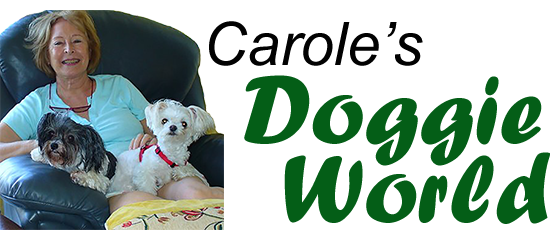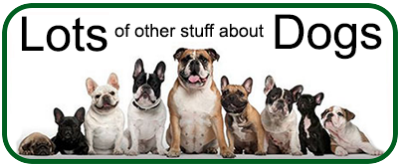People food which is dangerous or even fatal for your dog
Alcoholic beverages and alcohol toxicity | Apples, apricots, cherries, peaches and plums | Avocados | Baking powder and baking soda | Caution, cooked bones can kill your dog! | Chocolate (all forms) | Coffee (grounds and beans) | Cooked, rich and fatty foods | Corn cobs | Dairy Products | Egg Whites | Grapes and raisins | Macadamia nuts and butter | Moldy or spoiled foods | Nightshade plants | Nutmeg | Onions (raw, dehydrated, cooked and powders) | Raw Fish | Rhubarb leaves | Table salt (sodium chloride) | Wild mushrooms | Yeast dough | Xylitol
This article gives you an overview of the common human foods, which have toxins that are poisonous to dogs and what to do if your dog ingests any of them.
Americans spend over $10 billion dollars a year on food for their dogs. Yet despite many people buying the best food money can buy, some pets would rather eat what we eat.
However, certain foods can be dangerous to your pet, causing varying degrees of illnesses. Some food is toxic due to ingredients and some by improper cooking, storage or poor hygiene.
.jpg)
For example "many well intending pet owners think Grapes and raisins are not a problem and later find their dog has developed kidney failure".
There are more than 100,000 cases of pet poisoning in the United States each year. "If you aren't sure if a food is toxic, please call the Animal Poison Control Center ASPCA 24/7 hotline: (888) 426 4435 or check with your vet.
There are a number of common "human" foods that your pooch shouldn't eat and the important thing is to know exactly which ones they are, and to avoid giving them to your best friend. Please refer to our list below for the worse offenders.
Alcoholic beverages and alcohol toxicity
"Ethanol" is the component in alcoholic beverages that causes alcohol toxicity in dogs. Generally speaking, our pets are much smaller than us and as such can be highly affected by small amounts of alcohol to the point of fatal intoxication. Don't ever offer alcoholic beverages to your pets.

Here are some of the symptoms and side effects of alcohol:
- In-coordination and ataxia
- Excitement
- Depression
- Excessive urination
- Breathing rate is slowed
- Cardiac arrest and death
Apples, apricots, cherries, peaches and plums
It's the seeds, stems and leaves of these fruits that contain a toxic type component called "cyanide" and not the fruits themselves. Symptoms of toxicity include:
- Apprehension
- Dilated pupils
- Breathing difficulty
- Hyper-ventilation
- Shock
Avocado
Avocado leaves, skin, stones, and bark contain a toxic substance known as "persin", which is a fatty acid derivative that is toxic to dogs. Persin is also present in the fleshy part of avacados but to a lesser degree.
The amount of persin required to be ingested to cause allergic reactions is not known. Therefore, play it safe don't give any part of an avacado to your dog, and when disposing of avacardo peelings and stones in your trash make sure they are wrapped and sealed well away from your nosey pooch.
Toxicity symptoms include:
- Difficulty breathing
- Severe gastrointestinal distress, e.g. Vomiting and Diarrhea
- Abdominal enlargement
- Abnormal fluid accumulations in the chest, in the sac around the heart and in the abdomen
- Bloating
Baking powder and baking soda
Baking soda and baking powder are both leavening agents. A leavening agent is a common ingredient in baked goods that produces a gas causing batter and dough to rise. Baking soda is simply sodium bicarbonate.
Baking powder consists of baking soda and an acid, usually cream of tartar, calcium acid phosphate, sodium aluminum sulfate or a mixture of the three. Ingestion of large amounts of baking soda or baking powder can lead to:
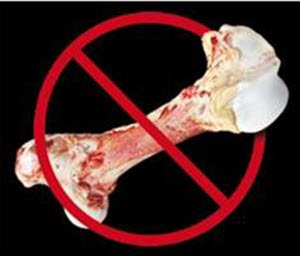
- Electrolyte abnormalities (low potassium, low calcium and/or high sodium)
- Muscle spasms
- Congestive heart failure
Caution, cooked bones can kill your dog!
The FDA warns that our time-honored tradition of giving our dogs bones could be dangerous and even deadly for dogs.
Click here to find out which bones ones are safe for your dog.
Chocolate (all forms)
Chocolate contains "caffeine" (a nervous system stimulant), "theobromine" (a cardiac stimulant and a diuretic) and high fat content (causing vomiting and diarrhea). All three components can be very toxic to your dog.

The levels of caffeine and theobromine vary between different types of chocolate, for instance, white chocolate has the lowest and baking chocolate or cacao beans have the highest concentration.
Depending on the type of chocolate and the amount eaten, various symptoms can occur including:
- Restlessness and hyperactivity
- Muscle twitching
- Increased drinking and urinating
- Excessive panting
- Vomiting
- Diarrhea
- Seizures
- Increased heart rate and blood pressure
- Heart arrhythmia (where the heart beats out of sync as in patients needing pacemakers)
- Cardiac arrest and death
Action plan
If your dog has ingested chocolate it is imperative that he or she vomits it up straight away. Drop whatever you are doing and take your dog to your vet straight away. He or she will induce vomiting immediately and hopefully your pet will be spared any of the horrible side effects listed above.
Coffee (grounds and beans)
Dogs that eat coffee grounds or beans can get "caffeine" toxicity. The symptoms are very similar to those of chocolate toxicity and can be just as or even more serious.
Coffee is a stimulant and in addition contains a dangerous components called "xanthines" which causes damage to the nervous and urinary systems of dog, and over stimulation of their heart muscles.
The symptoms are very similar to those of chocolate toxicity and can be just as, or even more serious. Please refer to chocolate toxicity "signs and symptoms" and "action plan" above.
Cooked, rich and fatty foods
Cooked, rich and fatty foods such as gravies and bacon draw dogs like magnets. Unsuspecting owners often give them as treats or leftovers.
These foods are almost always responsible for triggering off pancreatitis, and whilst pancreatitis can affect any dog certain breads are particularly prone:
- Miniature or toy poodles
- Cocker spaniels
- Miniature schnauzers
Signs of pancreatitis generally include:
- Severe gastrointestinal problems, e.g. an acute onset of vomiting
- Sometimes diarrhea
- Abdominal pain (often evidenced by a hunched posture or "splinting" of the abdomen when picked up
- Sometimes a fatal reaction
As with chocolate and coffee toxicity reactions dogs can become very sick very quickly, and will need intravenous fluids and antibiotic therapy immediately. Time is of the essence here, so get your furry friend to your family vet pronto.
Corn cobs
Many dogs love to chew on corn cobs, because they enjoy the taste of the salt and butter we put on them.
Corn cobs can cause intestinal obstruction, a very serious (and potentially fatal) medical condition. And additionally, some dogs are sensitive to corn and can suffer intestinal effects from that as well as the physical obstruction.
Signs seen with intestinal obstruction or partial obstruction may include:
- Vomiting or dry retching
- Diarrhea (or straining)
- Not eating
- Painful abdomen
- Lethargy
It is wise to keep all cobs away from your dog, safely secured in the trash, and well out of reach of your pet.
If you suspect your dog has eaten a cob (or any food or foreign material that they shouldn't have), please call your vet as soon as possible. The sooner, the better.
Your vet will be able to advise you on the best course of action, be it watch-and-wait or be examined immediately.
Dairy Products
Human dairy products are not highly toxic but are dangerous for dogs for three reasons:
- The risk of pancreatitis, due to their high fat content
- The sudden appearance of raised and extremely itchy weals on dogs' skin
- Indigestion, ranging from gas to diarrhea, because dogs lack the correct enzymes to digest lactose
Small amounts of plain yogurt or cheese are tolerated by some dogs but it is probably safest to avoid dairy products altogether. There is a lactose free milk product available that poses no risk to dogs, called Milk-O-Pet.
Egg Whites
Egg whites alone are very dangerous for dogs because they contain a protein named "avidin" which, has the effect of depleteing a dog's body of the essential B vitamins. The good news is, that the yolk contains the antidote to this protein, and so serving the egg in its entirety is nothing to concern yourself over.
Grapes and raisins
Recent studies have found that dogs which have eaten their way through a small bunch of grapes or a handful of raisins can develop kidney failure. Aggressive, and sometimes prolonged, treatment may be necessary to give the affected dog a chance at survival - without treatment the condition is often fatal.
Despite testing, the reason for the kidney failure and the amount necessary for toxicity remains unknown. For now, any dog that ingests any amount of grapes or raisins should be rushed to vet immediately.
Macadamia nuts and butter
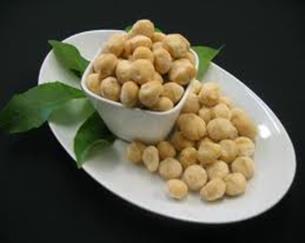
Macadamia nuts, also called Queensland or Australia nuts, can be extremely toxic to dogs. The mechanism behind why these nuts are toxic is a mystery.
However, it has been noted that dogs which have eaten as few as six nuts can show severe toxic symptoms to include:
- Pale gums
- Abdominal pain
- Vomiting
- Tremors
- Lameness, stiffness and or difficulty in walking
- Weakness in muscles (this can lead to paralysis in some cases)
- Depression
Fortunately most of the above symptoms dissipate within 12 to 24 hours.
Moldy or spoiled foods
Dogs love to get into the trash can and if the trash contains moldy or spoiled food, your dog could end up with a serious liver problem depending upon what kind of mold he or she has eaten.
Molds come in more than one type, and each type has its own variety of mycotoxins including:
- Aflatoxin is produced by a fungus called aspergillus. Aspergillus is found in foods such as moldy dog food, bread, and cheese. Dogs are highly sensitive and very susceptible to aflatoxin toxins.
- Penitremand is found mainly in penicillium molds which commonly grow on moldy food items such as nuts, cheese, and bread. It is also commonly found in garbage and compost piles. Penitrem poisoning in dogs occurs very frequently!
- Vomitoxin is produced by fusarium mold which grows on grains such as wheat, barley, oats and corn which are common ingredients of commercial dog foods.
The result of dog poisoning by moldy or spoiled foods is impaired liver function. If you suspect your pet has been rummaging through the trash can symptoms to keep and eye out for include:
- Refusing food
- Abdominal tenderness
- Vomiting
- Diarrhea
- Muscle tremors
- In-coordination
- Elevated temperature
- Excessive salivation
- Over sensitive to external noises and activities
- Liver damage
Your pooch may suffer from a short lived, acute attack, or a chronic condition lasting for several days. Dog poisoning by any of these molds can be very serious if left untreated. Please get your dog to the vet immediately.
Nightshade plants
There are over 2,500 plants, fruits and vegetables which fall into the nightshade category, that contain a substances toxic to dogs called "solanine and alkaloids".
It is impossible to list them all here, but the two main ones you need to be careful of when walking your dogs are the black and white varieties of horse nettle.

On the home front the most dangerous are:
- Potatoes (particularly the peelings of green looking potatoes)
- Tomatoes (particularly the green leaves and stems of tomato plants
- Peppers
The main symptoms with solanine and alkaloids poisoning are:
- Drooling
- Severe gastrointestinal upsets (vomiting, diarrhea and bloat)
- Loss of appetite
- Drowsiness
- Central nervous system depression
- Confusion
- Behavioral changes
- Weakness
- Dilated pupils
- Slowed heart rate
Nutmeg
You may not realized this but high levels of nutmeg can be toxic, even fatal for dogs. The toxic principle is not well understood. Signs of nutmeg toxicity include:
- Tremors
- Seizures
- Nervous system impairment
- Death
Onions (raw, dehydrated, cooked and powders)
Dogs lack the enzyme necessary to properly digest onions and this could result in severe gastrointestinal distress. Symptoms can begin immediately after eating the onion or a few days later, including:
- Gas
- Vomiting
- Diarrhea
When dogs eat large amounts of onions their red blood cells become fragile and break apart causing severe anemia and in some cases even death can occur. This is due to the toxic ingredient in onions called "thiosulphate".
Fortunately onion poisoning need not be fatal for dogs and anemia can be reversed when their owners stop feeding them onions.
Raw Fish
Raw fish is off limits, particularly if you are located in the North West Pacific area.
If eaten raw, salmon and other fish often carry a fluke and that fluke carries a bacteria that is known to cause seizures and even death in canines. The key to feeding fish to dogs is to cook it well, this kills the fluke and elminates the danger.
Rhubarb leaves
If you grow rhubarb in your garden, keep a close eye on your dog and make sure he or she doesn’t munch on the leaves. leaves. The oxalates in rhubarb leaves can damage your dog's:
- Nervous system
- Digestive system
- Urinary system
Clinical signs of this type of poisoning include:
- Drooling
- Inappetance
- Vomiting
- Diarrhea
- Lethargy
- Weakness
- Tremors
- Blood in urine
- Changes in thirst and urination
If you suspect fido has had a jolly good feed of rhubarb leaves, grab a couple of leaves and head off to your vet immediately. This is an emergency and not something that can be put off until tomorrow.
For your reference, please click on the Rhubarb Pet Poison Helpline
Table salt (sodium chloride)
Large amounts of table salt found in bacon, ham, salted chips and snacks can give your dog "sodium ion" poisoning. Signs that your pet may have eaten too many salty foods include:
- Excessive thirst and urination
- Vomiting
- Diarrhea
- Depression
- Tremors
- Elevated body temperature
- Seizures
- Death
Wild mushrooms
Wild mushroom poisoning occurs as a result of ingesting toxic mushrooms. This is a common hazard for dog breeds that need a lot of exercise, and are fortunate enough to live in areas that have ready access to wooded areas, particularly in Summer and Autumn.
Toxic mushrooms are classified into four categories (A, B, C, D), based on the clinical signs and their time of onset, and into seven groups (1-7) on the basis of the toxin they contain.
However, because it is sometimes difficult to identify what type of mushroom your dog has eaten, you should always take the suspected mushroom with you when you take your dog to the vet.
Symptoms vary greatly depending on the type of mushroom ingested:
- Category A mushrooms, for example, are the most toxic and cause the destruction of cells, especially liver and kidney cells
- Category B and C mushrooms, meanwhile, affect the nervous system
- Category D mushrooms cause gastrointestinal irritation
The following symptoms are some of the more common symptoms associated with mushroom poisoning in general:
- Abdominal pain
- Vomiting
- Diarrhea
- Weakness and uncoordinated movements
- Lethargy
- Yellowing of the skin (jaundice)
- Excessive drooling (ptyalism)
- Seizures
- Coma
Yeast dough
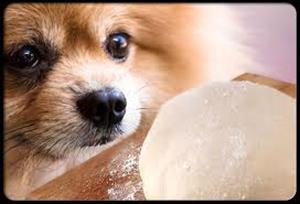
When dogs eat yeast dough it "rises" in their stomachs (often many times its original size), just as it does when people make bread. As the dough rises and ferments, alcohol is produced and Alcohol toxicity occurs. Symptoms include:
- Vomiting and retching
- Abdominal discomfort
- Lethargy
- Depression
- Bloat which is often fatal
Xylitol
Xylitol is a sugar-alcohol sweetener found in sugar-free human food such as chewing gum, candy and sweets as well as other products, such as biscuits, cookies and cakes.
Dogs that eat significant amounts can develop symptoms in as little as 30 minutes and go on for hours. If you suspect your dog has eaten any of the above food, symptoms to keep and eye out for are:
- A sudden drop in glucose (blood sugar)
- Weakness
- Lethargy
- Loss of coordination leading to your dog collapsing
- Seizures
Prevention is always better than a cure
Dogs are pretty much like small children, and parents never know what mischief they are going to get into next. Therefore the responsibility is on pet parents to make themselves familiar with the foods above, and to keep them out of reach of their pets.
If your furry friend is a scrap scavenger make sure you have a dog-proof compost cover.
Keep the following phone numbers and items handy
- Animal Poison Control Center ASPCA 24/7 hotline: (888) 426 4435
- Your vet's emergency phone number.
- A first aid kit for pets, and if you take your dog out hiking and walking frequently keep one in your car as well.
- A First Aid Kit
- Activated charcoal capsules (charcoal delays absorption of any toxin by binding to the toxic compound in the stomach, and acts as a delaying mechanism until you can get your pet to your vet.)
Treating toxic food poisoning
The most important thing is not to delay taking your pet to the vet. When treating food poisoning time is always of the essence in saving dogs lives. Whatever toxin your pet has eaten, if possible take a sample of it with you. Your dog needs to be induced to vomit and your vet and only your vet is the person to do this - do not attempt to do this yourself!
Other relative links
Carole's Doggie World has other articles listed below, which give extra information about holistic treatments available and medical procedures to follow regarding:
Emergency first aid
Seizures
Hives
This article and information forms part of the Carole's Doggie World Holistic Library and is presented for informational purposes only.The information is not intended to be a substitute for visits to your local vet. Instead, the content offers the reader information researched and written by Carole Curtis for www.carolesdoggieworld.com
